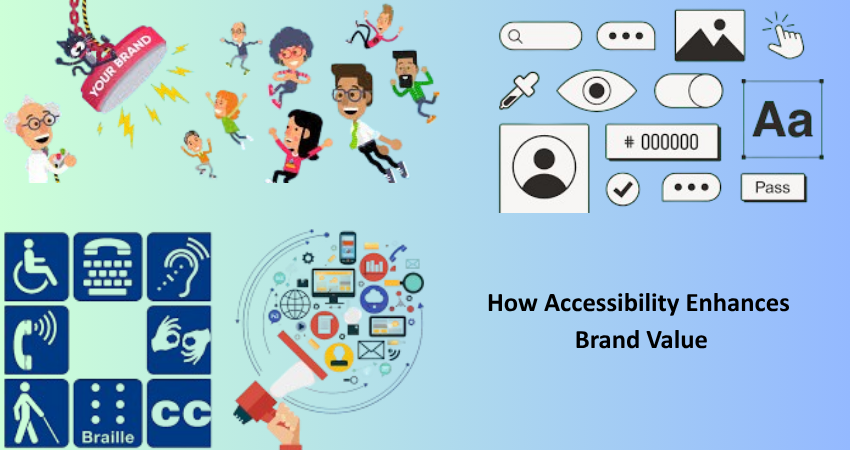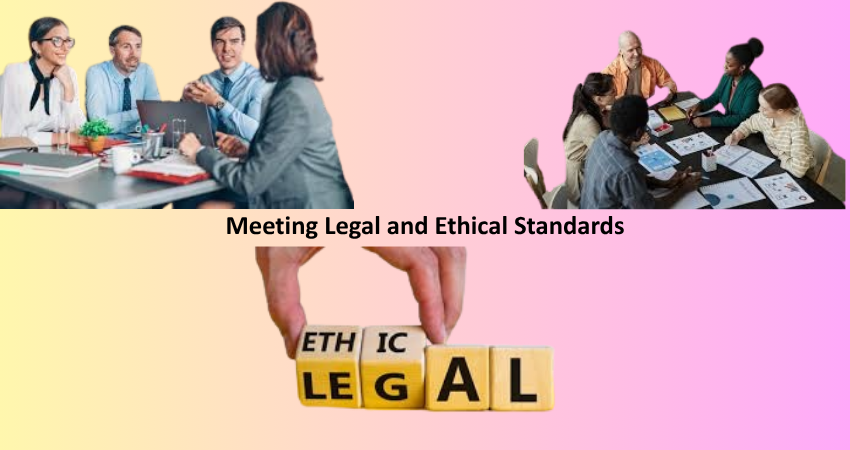
Introduction
In today digital world, accessibility is no longer purely a concern for compliance with some laws or for specialists in that area; it is becoming key in developing a truly real and real brand. Simply, accessibility is designing websites, digital contents, and user experiences in such a way that a person can use them with disabilities such as visual, auditory, motor, or cognitive impairments. But aside from legal or ethical considerations, accessibility shall enhance a brand value. When a brand commits to inclusion through accessible design, it signifies empathy, professionalism, and social responsibility.
Accessibility of digital assets indicates that your brand truly equals all users, thus the potential benefits of this inclusivity may positively affect customer loyalty, increase numbers of customers reached, and develop strong connections with the broader communities. This not only complies under SEO best practices but enhances usability overall, again for all users—not merely the challenged ones. Therefore it is a business-smart and human-smart decision to conceptualize something related to the priority given to accessibility. This article digs down into how accessibility enhances brand value, in terms of its effects on the perception of the brand by the customer, customer retention through value, improvement of SEO, reach to the market, and legal compliance.
Building an Inclusive Brand Identity
Demonstrating Ethical Responsibility and Empathy
An explicit commitment to accessibility is a reflection of the company’s value system. It is this type of social-consciousness gesture that demonstrates concern for the welfare of customers and social responsibility. Socially aware consumers with increasingly strong proclivities toward brands that espouse inclusivity and equality support such ideals in their principles. When digital products are designed to be accessible, they can be a statement of best practices for the brand and an expression of empathy and ethical responsibility. Such emotional connections could strongly sway consumer choices, particularly among the younger generation who evaluate their consumption choices based on ethical grounds.
Furthermore, accessibility enhances trust and loyalty. Customers who feel they are being made heard and included are more likely to return for continued purchasing and offer loud support for the brand. For a person who is blind, an easy-to-navigate website or a captioned video for a hearing-impaired person will be something that they remember because it enabled carefree interaction. Such little things do humanize your brand. It depicted the organization as one that does not look at its customers as data points but as people that come from different walks of life with different needs and experiences. And this leads to building goodwill that, over time, adds significant brand value.
Representing Modern, Forward-Thinking Values
An accessible brand is a contemporary brand. In a rapidly evolving digital landscape, accessibility reflects innovation and foresight. Brands that advocate accessibility often position themselves as thought leaders who take advantage of technology and an inclusive approach. As accessibility becomes a mainstream expectation, proactive changing businesses are seen as trendsetters instead of followers. Such reputation will take a great competitive advantage. It attracts not only ethically-minded consumers but also top-tier talent who want to work for a company that fights for meaningful causes.
Moreover, accessibility can also indicate how the brand can adapt to coming future challenges. The digital space is ever evolving; therefore, having accessibility built in to the core of your products will definitely prepare you for a changing world. This shows that your brand isn’t simply following trends but setting attainable, sustainable goals for the future. Creating this proactive approach will invite stakeholders and investors who appreciate resilience and future readiness. So, accessibility is not only going to reflect current values but also a strategic decision in future growth and relevance. It presents a company that leads with responsibility and purpose and thus boosts overall brand equity.
Expanding Market Reach

Reaching Underserved Audiences
Accessibility or access means connecting a brand with a section of the population which is often neglected or not properly served. The World Health Organization estimates that approximately 1 billion people, of the over 7 billion on the planet, have some form of disability. That’s quite a number-a vast audience with great purchasing power. By ignoring accessibility, brands deny these people the chance of being potential customers in the brand market. Conversely, making access as a priority will open the doors of new demography which translates to opportunity opening for engagement and revenue. This will not only be good ethics but is also smart business. Brands that make their websites and digital tools user-friendly for everyone may see measurable improvement in user satisfaction and conversion rates.
Accessing these people not flagged by emotive attachment would accompany strong extollers of the brand in those communities. Most people with disabilities will oftentimes share resource recommendations within their circles. Thus, brands that earn their trust with an easy-to-use design will tend to be popularized through word of mouth. Besides, these platforms will go further than just the people who have disabilities to reach older population groups with either treated or untreated declining vision, hearing, or dexterity. Accessibility being such, it will thus have the appeal of all generations. And yet, accessibility widens the reach into markets quite significantly. All of that broader outreach also drives traffic and sales, but, more importantly, positions your brand as one that truly appreciates and respects a diverse user base.
Enhancing International Appeal
Open accessibility is also important in the establishment of a universal brand. Digital accessibility has gained some countries into making itself mandatory. Brands that embrace accessibility comply with international standards such as the Web Content Accessibility Guidelines (WCAG) and the law of every country, such as the Americans with Disabilities Act (ADA) in the U.S. or the Equality Act in the U.K. Meeting these guidelines means that your digital content can save you from legal problems by making offerings more appealing in a globalized market.
Typically, accessible design shall compliment multilingual and localization efforts. Clear navigation, readable fonts, and behaviourally-intuitive layouts benefit users irrespective of their native language. This phenomenological usability can make it easy for users of non-English speaking regions to connect with your brand. It removes barriers of access for a much wider audience worldwide to discover what your brand has to offer. In a world where borders do not limit a brand’s reach anymore, building accessible digital platforms effectively links audiences across cultures and languages.
Strengthening SEO and Digital Visibility
Alignment with Search Engine Best Practices
Access and SEO principles coincide in certain areas. It makes accessibility a strategy that can easily result in increased rankings by search engines. Such things as using semantic HTML, giving associated alt text for images, providing a good descriptive link label, and keeping a logical heading structure all serve the effective user experience for individuals with disabilities as well as for search engines. Good structure allows for easy navigation, which for search engines is an indication of good user experience and thereby rewards this kind of content. Thus, most accessible websites tend to appear top in search engine result pages (SERPs), which makes their visibility much broader.
Screen reader access and search engine bots require structured, machine-readable content to interpret a webpage. Accessibility by design is naturally made easier to use to convey meaning and context. The inclusion of video transcripts and closed captions also provides more text that hearing-impaired users can use while search engines crawl it as an optimization. Such optimizations improve keyword relevance and authority of the site, both of which are critical to achieving high SERP rankings. Investment in accessibility thus serves two purposes, improving usability while encouraging your brand’s online discoverability.
Reducing Bounce Rates and Improving Engagement
The benefits of a well-accessible website go beyond attracting larger numbers of visitors; it retains them for longer. Users tend to spend more time on a website that has readily accessible design and ease of navigation, coherent visual presentation, and variants of input methods. Getting these conditions right also improves usability, thereby reducing the bounce rate, increasing the session time, and boosting page views—factors that tell search engines the website’s content is relevant and useful. On the other hand, users frustrated by being able to access a site through the inability to use keyboard navigation, or where the text is simply hard to read, will leave quickly. These negatively affect Search Engine Optimization (SEO) and user experience.
Enhanced accessibility leads to a far easier map across which a user can journey with reducing levels of anguish to find what it is that they are looking for. In this way, that frictionless experience creates a higher likelihood of a conversion, whatever that may constitute for the brand-the purchase of a product, newsletter subscription, or content engagement. As users see value and easy interaction with the brand, they are likely to become returning customers and spread the word. This natural cycle of engagement strengthens the brand and positively enhances your site’s SEO via increased activity and backlink opportunities. Thus, accessibility becomes a prime mover of sustained digital growth.
Meeting Legal and Ethical Standards

Avoiding Legal Risks and Penalties
Accessibility negligence bears serious legal implications. There have been increasing lawsuits against companies failing to comply with accessibility measures in the past few years. Not only are large corporations being sued, but small businesses are also at risk of getting penalized. A bunch of accessibility laws in the U.S., including, more notoriously, the ADA, sets forth requirements for accessible websites for disabled individuals. Not obtaining these should find you on the losing side of costly lawsuits, settlements, and reputation injuries lasting for years along the road.
Making accessibility a priority is a safer way to minimize legal risks. Engaging a third party for periodic accessibility audits would secure compliance with WCAG standards under legal methods. A legal requirement is no longer a mere checkbox but a demonstration by a brand of its commitment towards inclusivity and fairness. Stopping lawsuits is important; equally valuable are the worth and goodwill that come from doing right. Consumers will favor brands that are ethical and responsible, especially as public scrutiny is being applied on corporate accountability.
Promoting Ethical Business Practices
By ensuring accessibility in your digital strategy, a wider culture of ethical business is fostered. Such an environment reassures customers, employees, and partners that the brand works with integrity and supports social impact along with profit. Ethical branding is no marketing catchphrase; rather, it is a decades-long commitment to shaping the perception and relationship between people and your business. Brands that take the unique human activities seriously develop a deeper level of emotional connection and customer loyalty. These connections bring along greater lifetime customer value and trusted word-of-mouth referrals.
Beyond accessibility, inward thinking about inclusivity across business functions is another by-product. Committed companies with accessible design consider accessibility values when hiring, in customer service and product development, thus forming a circle of cohesion for their brand identity based on fairness, transparency, and empathy. These shorter ways of trading will appear more guttural and almost pragmatic to potential stakeholders wishing to invest in or collaborate with firms prepared to stand up and be counted in social responsibility. You effectively work to brand your enterprise as a trusted leader in both its sector and community by putting accessibility at the center of your brand ethos.
Conclusion
Accessibility transcends the scope of a compliance checklist or a mere technical requirement; it serves as a bedrock for an invaluable, future-ready brand. Making your website or digital experience accessible boosts your brand identity, further expands the market reach, enhances SEO performance, and harmonizes legal and ethical standards; all these fold for creating a brand that can be embraced, admired, and have the potential for sustainable growth.
Accessibility is not just people with disabilities but improves the experience of everyone involved in showing a commitment to fairness and innovation. Accessibility will tend to be one of the defining factors for brand value or differentiating their competitive advantage in the future as the digital ecosystem evolves. Those organizations that realize and capture this opportunity will prosper and become exemplary in raising the bar for a more inclusive digital world.